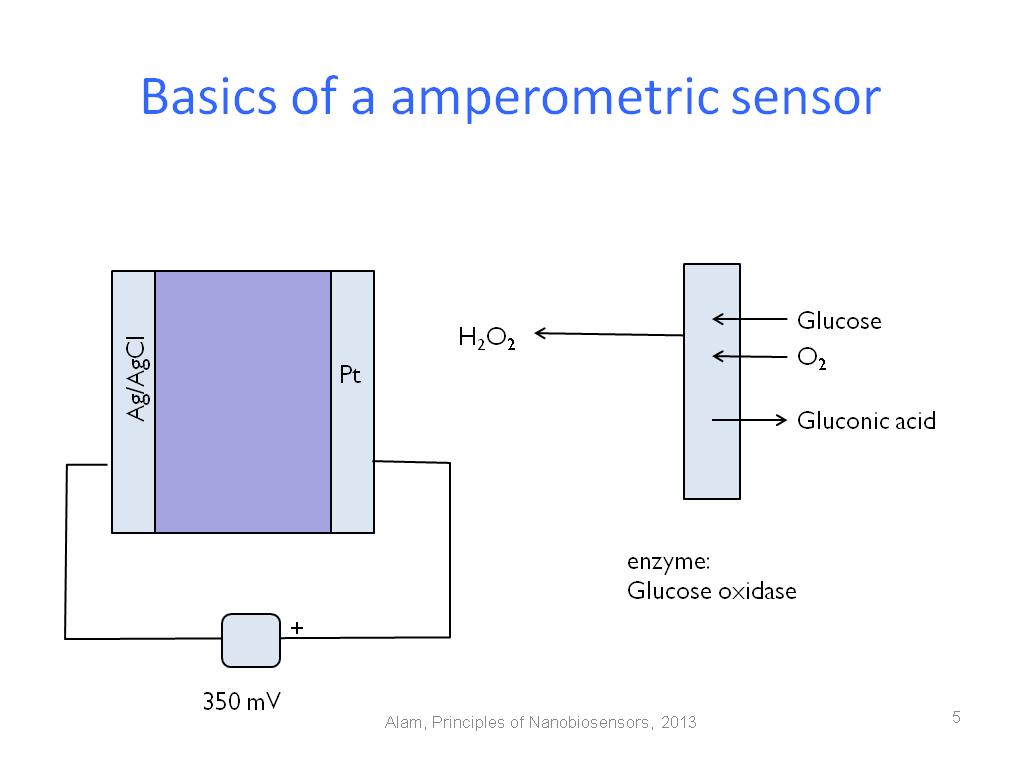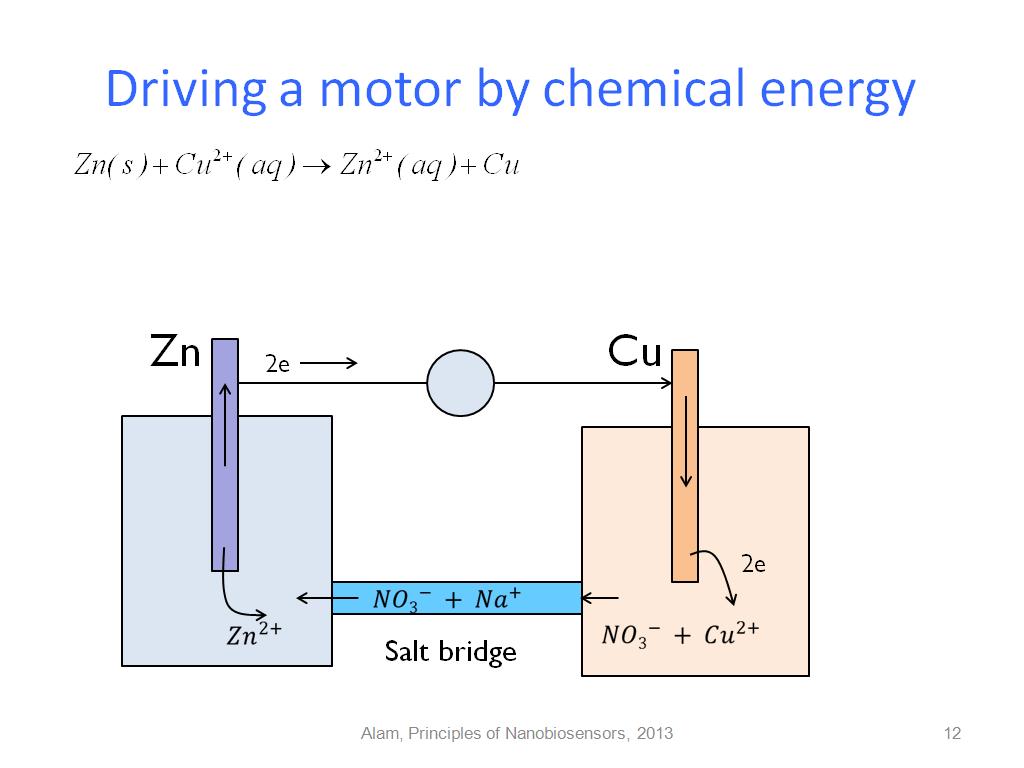
nanoHUB-U: Principles of Electronic Nanobiosensors
Course overview Offering: 01a Section: Self Paced
Video
-
 1. Lecture 3.7: Amperometric Sens…
0
00:00/00:00
1. Lecture 3.7: Amperometric Sens…
0
00:00/00:00 -
 2. Three types of sensors
24.657991324657992
00:00/00:00
2. Three types of sensors
24.657991324657992
00:00/00:00 -
 3. A short history of sensors
180.91424758091426
00:00/00:00
3. A short history of sensors
180.91424758091426
00:00/00:00 -
 4. A glucose sensor
229.39606272939608
00:00/00:00
4. A glucose sensor
229.39606272939608
00:00/00:00 -
 5. Basics of a amperometric senso…
298.09809809809809
00:00/00:00
5. Basics of a amperometric senso…
298.09809809809809
00:00/00:00 -
 6. Glucose sensing
497.43076409743077
00:00/00:00
6. Glucose sensing
497.43076409743077
00:00/00:00 -
 7. Why amperometric sensors?
557.35735735735739
00:00/00:00
7. Why amperometric sensors?
557.35735735735739
00:00/00:00 -
 8. Outline
712.07874541207877
00:00/00:00
8. Outline
712.07874541207877
00:00/00:00 -
 9. Let us start with the cell on …
719.21921921921921
00:00/00:00
9. Let us start with the cell on …
719.21921921921921
00:00/00:00 -
 10. Spontaneous reaction
732.99966633299971
00:00/00:00
10. Spontaneous reaction
732.99966633299971
00:00/00:00 -
 11. Spontaneous reaction and the d…
828.96229562896235
00:00/00:00
11. Spontaneous reaction and the d…
828.96229562896235
00:00/00:00 -
 12. Driving a motor by chemical en…
891.4914914914915
00:00/00:00
12. Driving a motor by chemical en…
891.4914914914915
00:00/00:00 -
 13. Forced oxidation-reduction
1039.3727060393728
00:00/00:00
13. Forced oxidation-reduction
1039.3727060393728
00:00/00:00 -
 14. Electrolysis: forced oxidation…
1227.7944611277944
00:00/00:00
14. Electrolysis: forced oxidation…
1227.7944611277944
00:00/00:00 -
 15. Outline
1338.1047714381048
00:00/00:00
15. Outline
1338.1047714381048
00:00/00:00 -
 16. The issue of reference electro…
1340.573907240574
00:00/00:00
16. The issue of reference electro…
1340.573907240574
00:00/00:00 -
 17. Without a Reference Electrode …
1387.3873873873874
00:00/00:00
17. Without a Reference Electrode …
1387.3873873873874
00:00/00:00 -
 18. The purpose of reference elect…
1421.1211211211212
00:00/00:00
18. The purpose of reference elect…
1421.1211211211212
00:00/00:00 -
 19. A three electrode cell
1452.2522522522522
00:00/00:00
19. A three electrode cell
1452.2522522522522
00:00/00:00 -
 20. Outline
1474.0073406740073
00:00/00:00
20. Outline
1474.0073406740073
00:00/00:00 -
 21. Current proportional to H2O2 c…
1477.8111444778112
00:00/00:00
21. Current proportional to H2O2 c…
1477.8111444778112
00:00/00:00 -
 22. Validation of H2O2 response
1638.4384384384384
00:00/00:00
22. Validation of H2O2 response
1638.4384384384384
00:00/00:00 -
 23. Conclusion
1737.1371371371372
00:00/00:00
23. Conclusion
1737.1371371371372
00:00/00:00
Prev Next
You must be enrolled to utilize the discussion feature.
In order to access this part of the course, you need to enroll. If you're enrolled, you're not obligated to complete the course. But enrollment lets you:
- Take quizzes and exams
- Track your progress
- Add notes to lectures
- Participate in discussions
For more details, check out our enrollment benefits .
I'm convinced...now what?
Want more details about this and similar courses?
To learn more, either visit the course overview page or browse the course listing.

























































